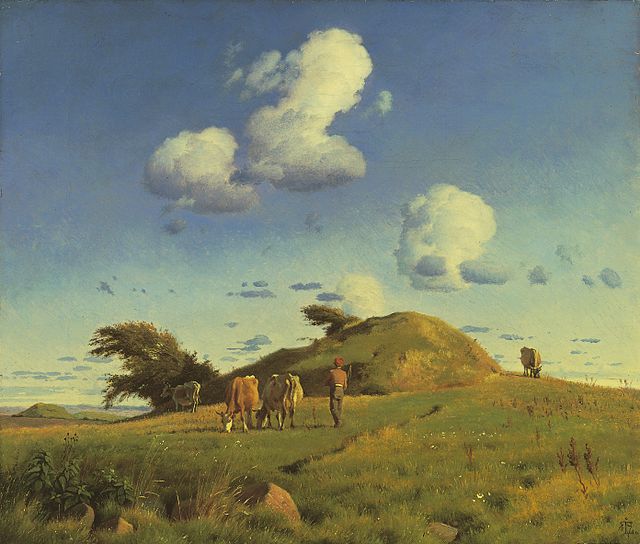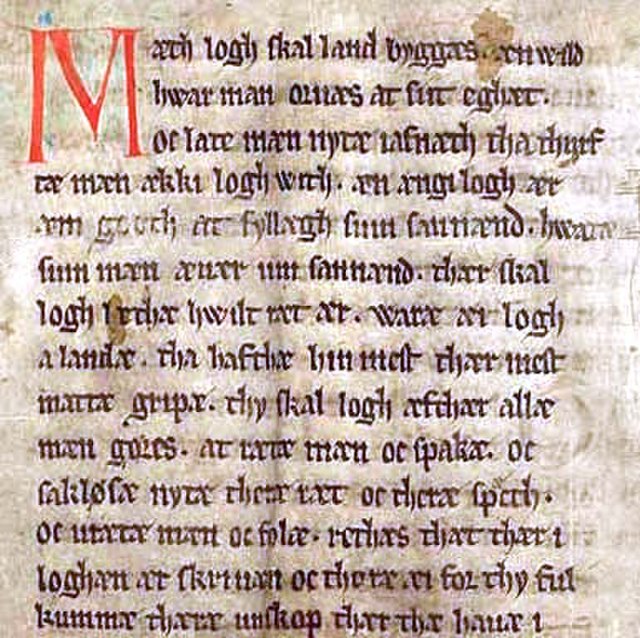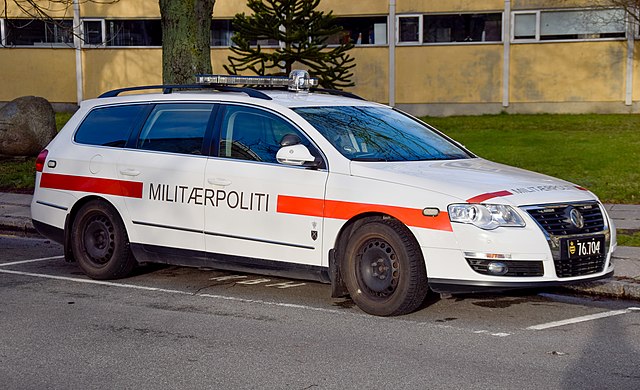The Danish Golden Age covers a period of exceptional creative production in Denmark, especially during the first half of the 19th century. Although Copenhagen had suffered from fires, bombardment and national bankruptcy, the arts took on a new period of creativity catalysed by Romanticism from Germany. The period is probably most commonly associated with the Golden Age of Danish Painting from 1800 to around 1850 which encompasses the work of Christoffer Wilhelm Eckersberg and his students, including Wilhelm Bendz, Christen Købke, Martinus Rørbye, Constantin Hansen and Wilhelm Marstrand, as well as the sculpture of Bertel Thorvaldsen.
Copenhagen on Fire by C.W. Eckersberg (1807)
A company of Danish artists in Rome, painted by Constantin Hansen, 1837. Lying on the floor is architect Bindesbøll. From left to right: Constantin Hansen, Martinus Rørbye, Wilhelm Marstrand, Albert Küchler, Ditlev Blunck and Jørgen Sonne.
Hankehøj by Johan Thomas Lundbye (1847)
Møns Klint by Louis Gurlitt (1842)
Danish is a North Germanic language from the Indo-European language family spoken by about six million people, principally in and around Denmark. Communities of Danish speakers are also found in Greenland, the Faroe Islands, and the northern German region of Southern Schleswig, where it has minority language status. Minor Danish-speaking communities are also found in Norway, Sweden, the United States, Canada, Brazil, and Argentina.
The first page of the Jutlandic Law originally from 1241 in Codex Holmiensis, copied in 1350. The first sentence is: "Mæth logh skal land byggas" Modern orthography: "Med lov skal land bygges" English translation: "With law shall a country be built"
Danish label reading militærpoliti, "military police", on a police vehicle
Learn Danish banner in Flensburg, Germany, where it is an officially recognized regional language
Danish keyboard with keys for Æ, Ø, and Å








